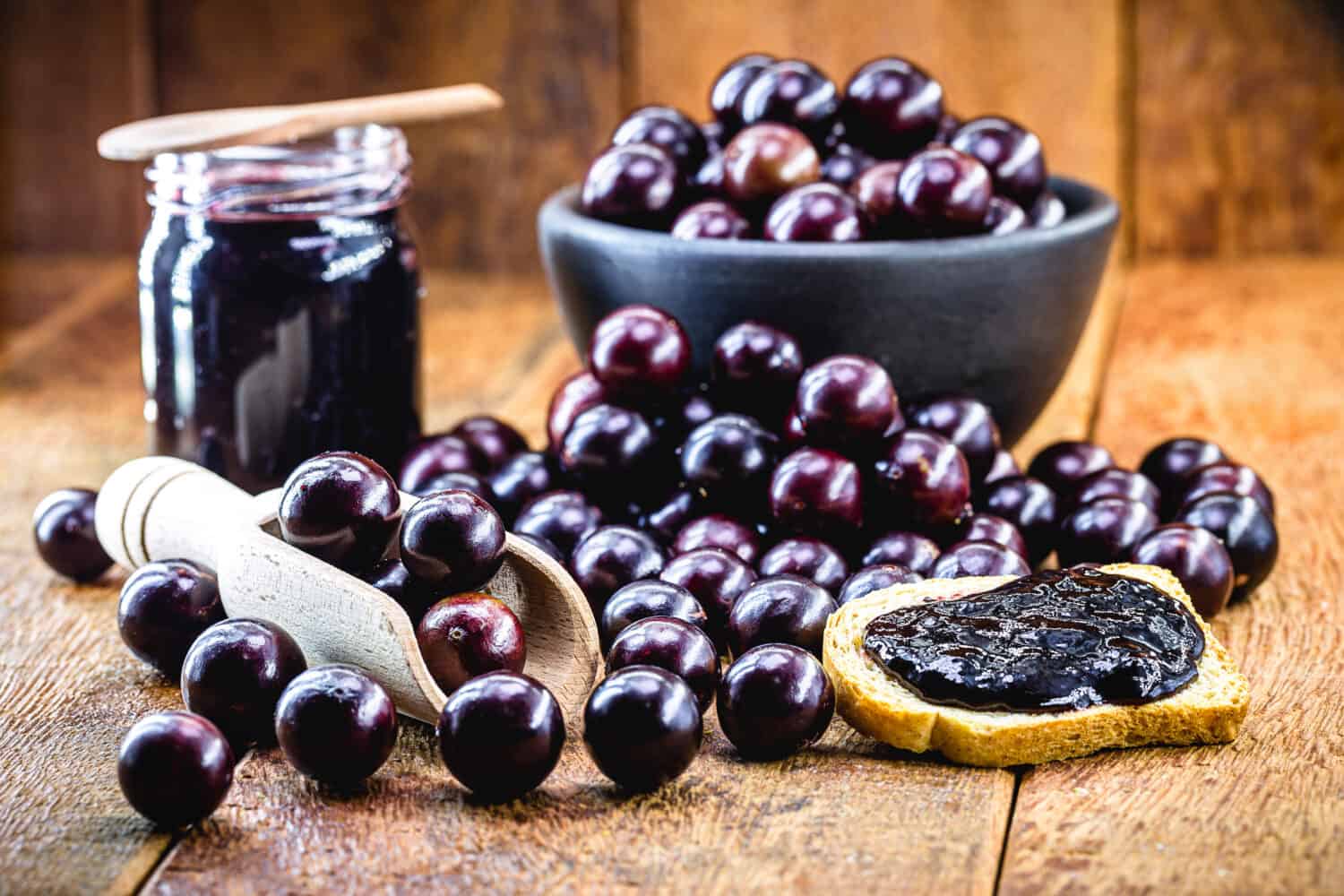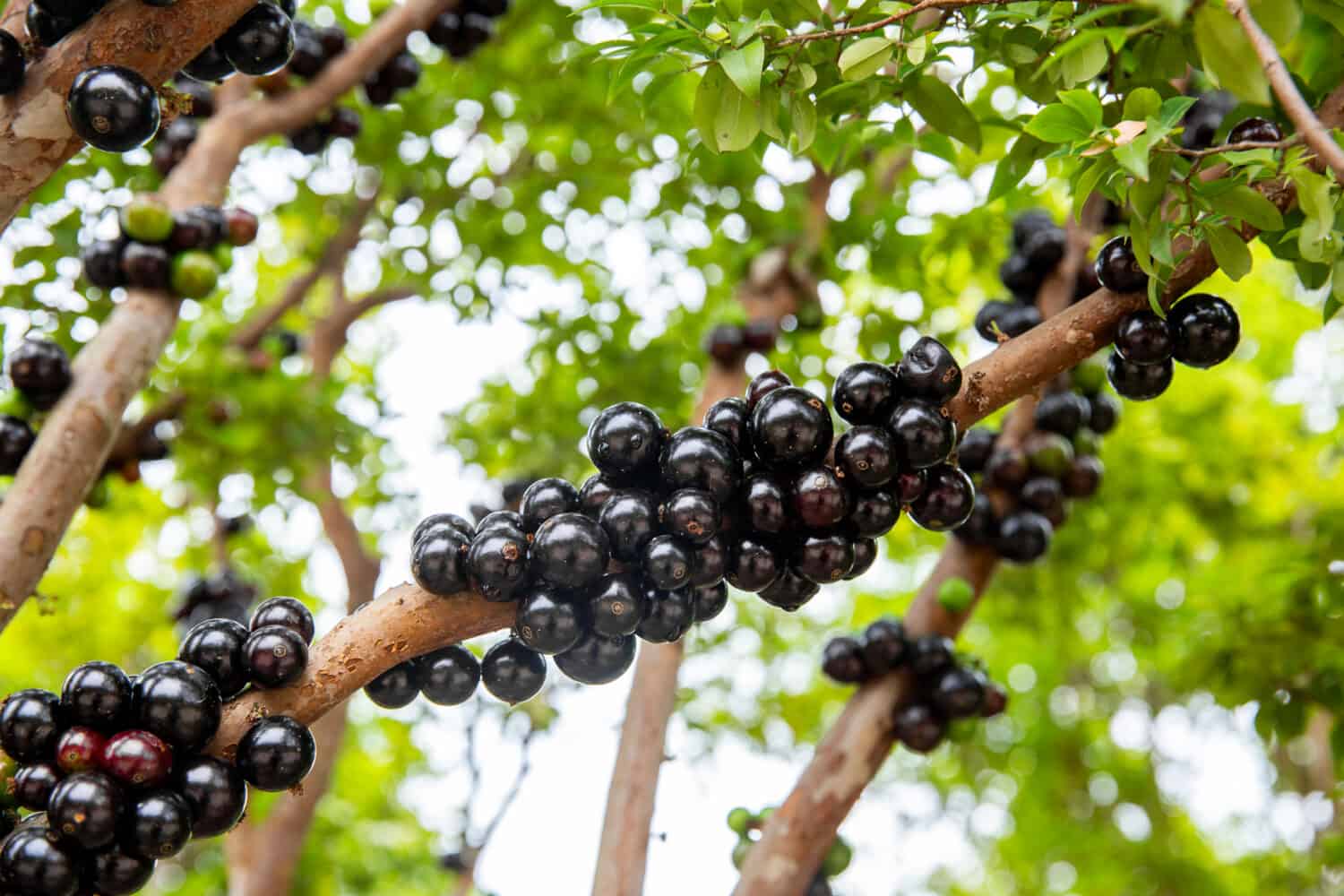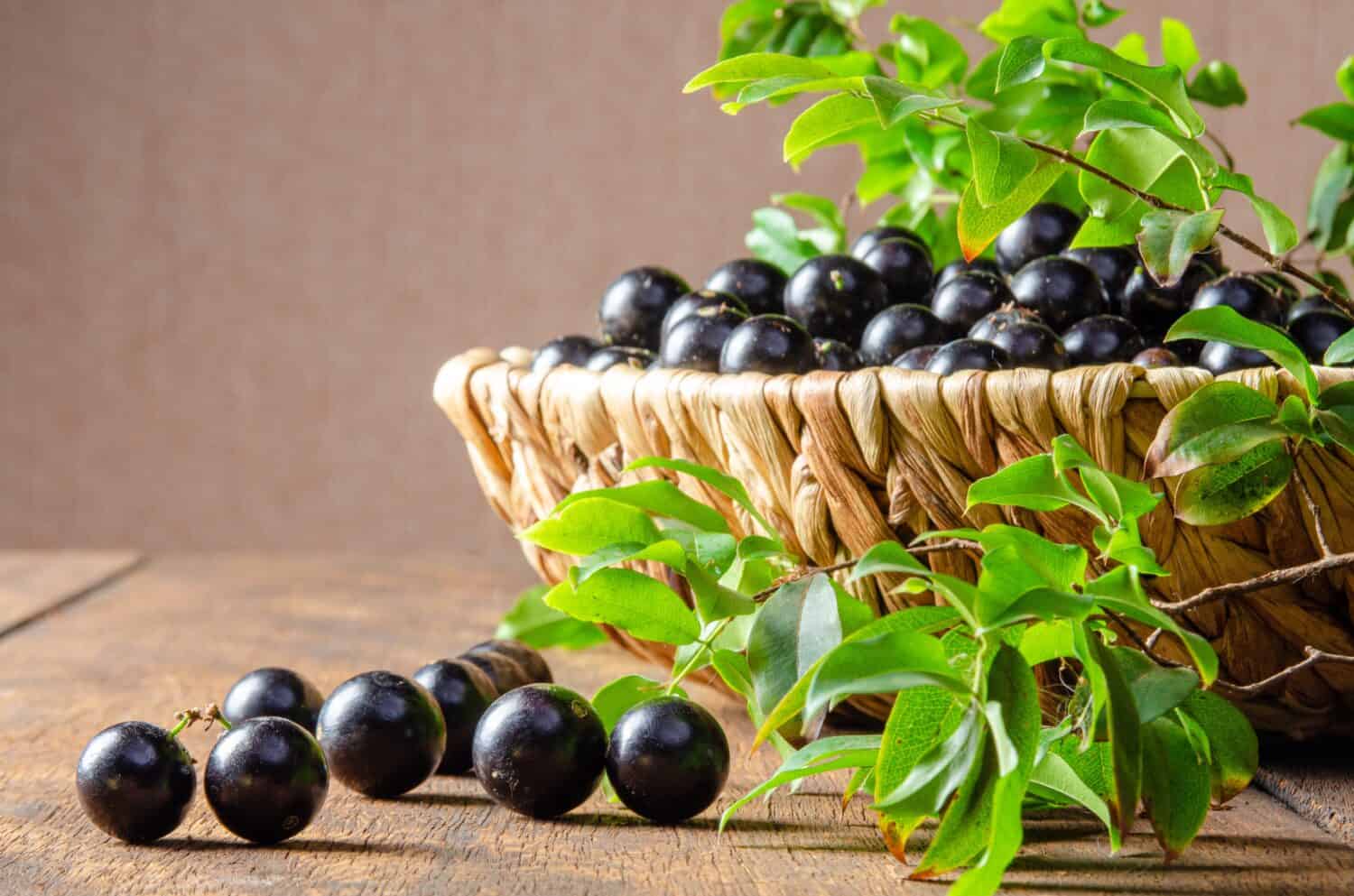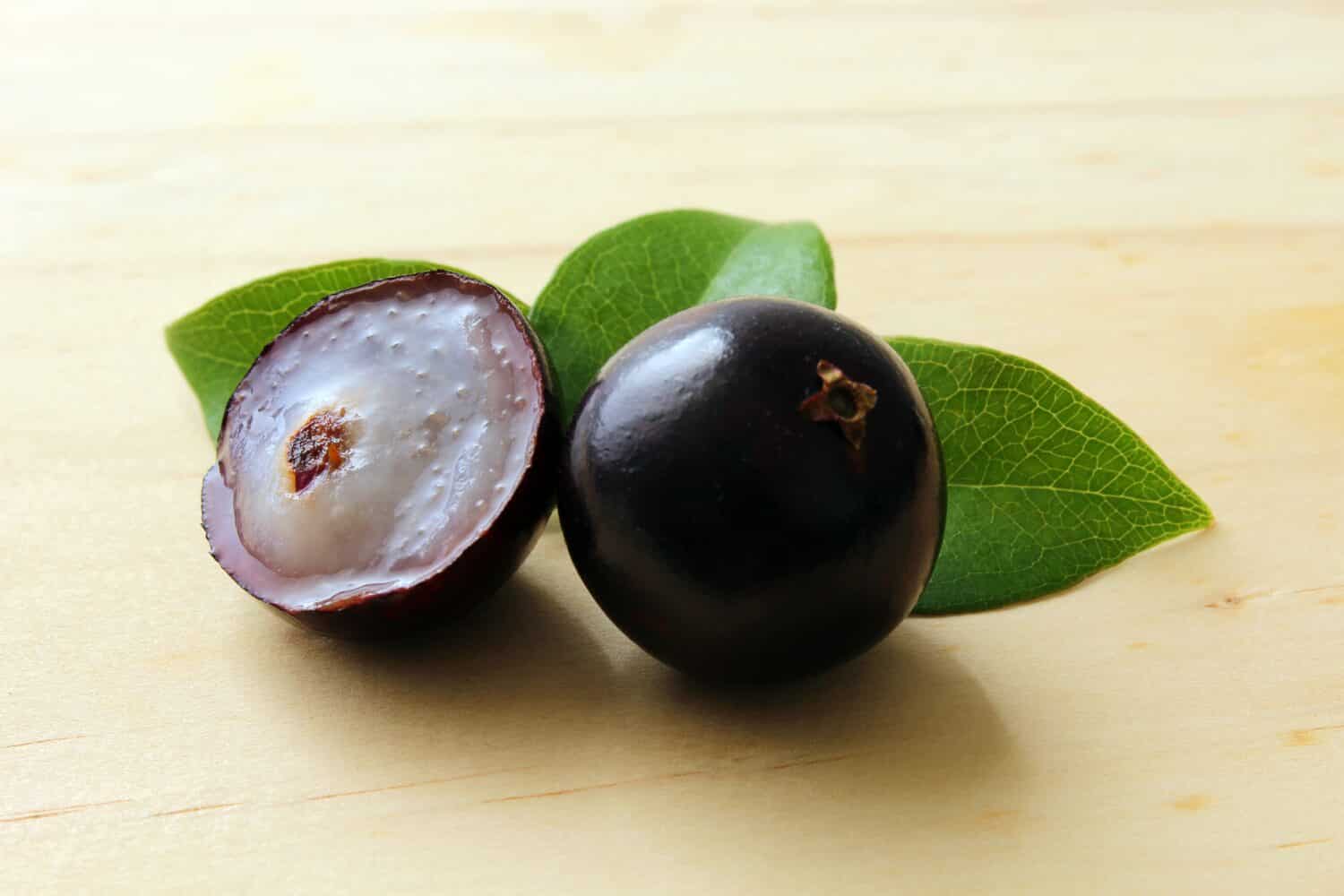

What is Jabuticaba? Taste, Health Benefits & Comparison to Other Fruit
The Jabuticaba is a highly intriguing fruit, with a unique name and somewhat elusive nature. For starters, it doesn’t grow on the branches of a Brazilian grape tree; it grows on the trunk of it! But that’s just the beginning. We’re taking a deep dive into the facts about jabuticaba, what it tastes like, the health benefits it offers (there are tons of them!), and how you can use this tough-to-find fruit from a culinary standpoint.

©RHJPhtotos/Shutterstock.com
What is Jabuticaba?
As we touched upon earlier, the jabuticaba fruit is a thick-skinned, blackish-purple berry that grows on the Brazilian grape tree. The inside of the berry, however, is somewhat unexpected in appearance. Rather than mimicking the color of its outer layer, jabuticaba (also known as jaboticaba) has whitish or pinkish flesh. It also possesses between one and four large seeds.
The jabuticaba is considered a ‘cauliflory’ in botanical terms, meaning the fruit is produced from a woody stem or trunk as opposed to being produced via new growth. For reference, other cauliflory examples include jackfruit and even the coffee plant. The jabuticaba tree is fond of a subtropical climate, and quite frankly, it’s a bit fickle. It can take between six and eight years to actually produce fruit, and it requires rich, well-drained soil to do so. Additionally, growing the jabuticaba fruit outside of Brazil can be challenging, and the fruit has an unexpectedly short shelf life ... We’re talking up to three days after harvesting it. This high level of perishability is largely based on water loss and fermentation, which both happen far faster than they typically do with most fruits.
The history of the jabuticaba fruit isn’t terribly complex. Rumor has it the tree originated in Brazil’s Minas Gerais region, but it is also native to other South American countries such as Peru, Bolivia, Uruguay, Paraguay, and parts of Argentina. Growing it elsewhere is somewhat more difficult. The tree was supposedly brought to Santa Barbara, California, in 1904, and there has been some success growing it in containers — particularly in other areas of California, where seasonal temperatures are still somewhat on the more tropical side.

©litchima/Shutterstock.com
What Does Jabuticaba Taste Like, and What is it Used For?
Jabuticaba berries have a unique flavor — a combination of acidity and sweetness that has been compared to muscadine grapes. And while the seeds are safe to swallow, chewing them isn't recommended. They can be quite bitter!
From a consumption standpoint, the jabuticaba berry can be enjoyed raw or used to make jelly, jam, juice, and even wine or other alcoholic beverages. With that said, you're not likely to have many options unless you're a Brazilian native. A quick search on Amazon yields very little — some live fruit trees, seeds, health supplement powder, and a jam or two. The reality is that finding jabuticaba outside of South America is fairly rare.
Outside of culinary preparations, jabuticaba can be found in soaps, lotions, body splashes, and more.

©Milton Buzon/Shutterstock.com
How Does Jabuticaba Compare to Other Fruits?
The jabuticaba berry is said to be roughly the size of a plum, with a flavor similar to the muscadine grape. Much like other fruits, it can be boiled down with sugar added to produce a delicious jam or jelly. However, its lengthy growth time (six to eight years from being planted to bearing fruit) makes it far less common in the average marketplace than other berries, which also tend to have longer shelf lives.
What are the Health Benefits of Jabuticaba?
The health benefits of the jabuticaba berries are astoundingly plentiful. They are even keto-friendly! First, they offer a high level of antioxidants — more than other berries that are touted for their antioxidant content, such as grapes, blueberries, or açai berries. Additionally, jabuticaba berries offer a solid dose of fiber and vitamins like C and E, along with calcium, iron, potassium, phosphorus, and anti-inflammatory properties.
Interestingly, the jabuticaba berries are prevalent in traditional folk medicine, treating such ailments as throat inflammation, asthma, cardiovascular issues, and more.

©Marco Tulio/Shutterstock.com
Important Takeaways:
- The jabuticaba (or jaboticaba) is a berry that is indigenous to Brazil and grows on the trunk of the Brazilian grape tree.
- The jabuticaba fruit is a thick-skinned, blackish-purple berry with a white pulp inside. It tastes both acidic and sweet and has been compared to a muscadine grape.
- Like many other fruits, the berries can be used to make jam, jelly, wine, and other specialty items.
- The jabuticaba offers significant health benefits, such as a high level of antioxidants, fiber, vitamins, calcium, iron, potassium, phosphorus, and anti-inflammatory properties.